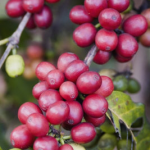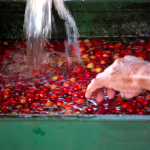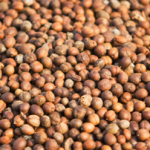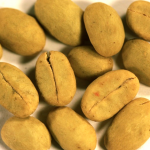Coffee is an amazing beverage, but it is so much more than that. Coffee goes through some pretty remarkable transformations from the plant to your cup. Coffee begins life as a berry, and looks much like a cherry when growing on the coffee shrub. Once ripe, coffee berries are picked, processed, and dried. Below is a brief explanation of the process from the plant to the cup…
Processing and Drying Coffee
 What we have come to know as coffee “beans” are really the seeds from coffee berries. It is necessary to process the coffee berries to convert the raw fruit into coffee beans. The seeds are extracted from the pulp of the cherry using one of two general types of processing methods: Wet-Processing, or Dry-Processing, they are then set out to dry.
What we have come to know as coffee “beans” are really the seeds from coffee berries. It is necessary to process the coffee berries to convert the raw fruit into coffee beans. The seeds are extracted from the pulp of the cherry using one of two general types of processing methods: Wet-Processing, or Dry-Processing, they are then set out to dry.
While all green coffee is processed, the method that is used varies and can have a significant effect on the flavor of roasted and brewed coffee.
 Wet Processing extracts the coffee beans prior to drying of the coffee. This method requires specific equipment, and uses large quantities of water. The coffee cherries are immersed in water which will help separate ripe fruit from the unripe berries. The skins are then removed through extended fermentation (with the aide of microbes), or through specialized machines.
Wet Processing extracts the coffee beans prior to drying of the coffee. This method requires specific equipment, and uses large quantities of water. The coffee cherries are immersed in water which will help separate ripe fruit from the unripe berries. The skins are then removed through extended fermentation (with the aide of microbes), or through specialized machines.
After the beans are removed from the fruit, they are left to dry out to a water content of approximately 10%. Coffee growers typically spread out the beans in large flat areas where they can be naturally dried by the sun – the coffee is raked and rotated to allow for even drying.
 Dry Processing on the other hand, allows beans to dry while still in the coffee fruit. After sorting and quality control (to ensure ripeness), the fruit is brought directly to the drying patios where they are allowed to dry out naturally in the sun. It may take up to 4 weeks before the cherries are dried to the optimum moisture content, depending on the weather conditions. On larger plantations, machine-drying is sometimes used to speed up the process after the coffee has been pre-dried in the sun for a few days.
Dry Processing on the other hand, allows beans to dry while still in the coffee fruit. After sorting and quality control (to ensure ripeness), the fruit is brought directly to the drying patios where they are allowed to dry out naturally in the sun. It may take up to 4 weeks before the cherries are dried to the optimum moisture content, depending on the weather conditions. On larger plantations, machine-drying is sometimes used to speed up the process after the coffee has been pre-dried in the sun for a few days.
With either Wet or Dry processing, the water content of the beans is critical. Overly dry beans tend to crack and break, whereas beans left too wet, can foster mold and fungi growth. (not a good thing for your coffee!)
With either process, the final stages of processing include: hulling, sorted, graded and packaged. In hulling the process removes all additional layers of cherry skin that might still be attached to the beans. The coffee is then sorted by size rated by bean quality. We choose only the very best rated coffees for our roasting.
 Once the beans are dried and ready to be shipped out, they are green in color. Green beans are fairly stable, and can stay fresh for up to 1 year. Beans are typically shipped out from the farms using jute or burlap bags, although some farms are moving to the use of vacuum sealed plastic bags to improve longevity and reduce the shipping expenses (and carbon footprint).
Once the beans are dried and ready to be shipped out, they are green in color. Green beans are fairly stable, and can stay fresh for up to 1 year. Beans are typically shipped out from the farms using jute or burlap bags, although some farms are moving to the use of vacuum sealed plastic bags to improve longevity and reduce the shipping expenses (and carbon footprint).
Roasting Coffee
We buy green coffee. Green, or dried coffee beans, are not useful until they have been roasted sufficiently. Coffee roasting on a commercial roasting machine can take 15-20 minutes, and will produce a range of coffee roasts. As the bean absorbs heat from roasting, the color shifts to yellow and then to varying shades of brown. During the later stages of roasting, oils appear on the surface of the bean, making it shiny.
Light Roasts tend to be a bit more mild, and taste quite different any other coffee you have tasted. Some varieties, like Kenya’s, do well with a light roast, and will produce incredible fruit flavors.
